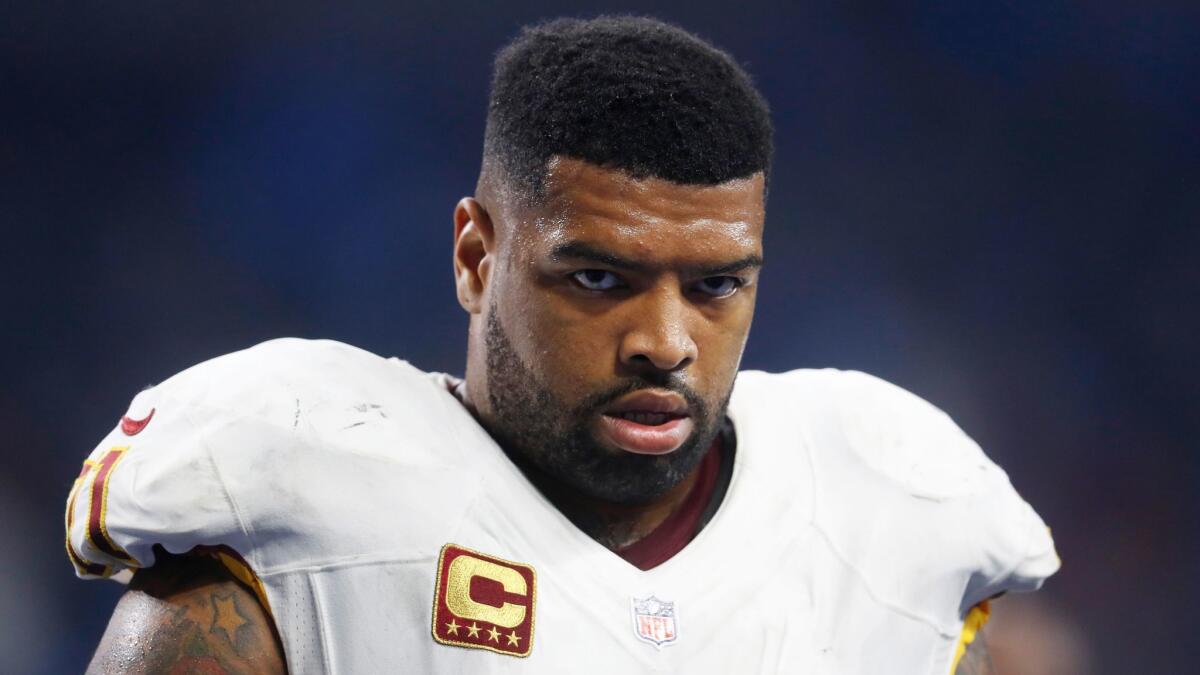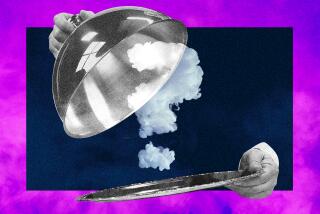Op-Ed: Take it from me as a former NFL player: Pot is better for pain than opioids

Pain is a constant in the game of football, and the National Football League has long relied on painkillers to keep its players on the field. This has made NFL locker rooms especially vulnerable to the opioid epidemic.
Former NFL players abuse opioid pain medications at four times the rate of the general population, according to a study by researchers at Washington University in St. Louis. In recent years, the NFL has been the subject of Drug Enforcement Administration investigations and multiple lawsuits alleging that the league recklessly administered painkillers to its players.
On top of opioid addiction, the NFL is facing mounting evidence that chronic traumatic encephalopathy, or CTE, the degenerative brain disease linked to repeated head injuries, is a near certain consequence of playing professional football. In a study released last month, CTE was found in 110 out of 111 former NFL playersâ brains. The Baltimore Ravens offensive lineman John Urschel cited the study when, two days after it came out, he announced his retirement from the NFL at the age of 26.
These two crises are why, two weeks ago, the NFL reportedly contacted the NFL Players Assn. and offered to work with the playersâ union to study the potential use of marijuana for pain.
With opioids, I generally experienced withdrawal symptoms after only three days. On the fourth day, I would become irritable and itchy.
While itâs commendable that the NFL is finally seeking an alternative treatment for pain â one that, some early studies suggest, may also help to protect the brain from injury â the truth is that NFL players have been proving the viability of cannabis as a pain medicine for decades.
I played professional football for six years, from 2002 to 2009 â mostly for the Denver Broncos, but also for the San Francisco 49ers, the Cleveland Browns and the Las Vegas Locomotives. Consuming cannabis was and remains a common practice throughout the NFL, accepted by the teams but rejected in New York and D.C., where the league is run.
Until I made it to the pros, I didnât take opioids. By then I had endured thousands of practices and scores of games and scrimmages â all of them painful, but not so painful that medication was required. I wanted to feel the pain â thatâs part of why I played football. And besides, if you donât feel the pain from an injury, you donât know when itâs gone and you canât really heal.
I didnât ask for opioids in the NFL, but every time I went to the training room to treat an injury â even an injury that didnât require missed playing time â I was given them anyway, in addition to anti-inflammatory medication such as Vioxx and Celebrex. Pain pills were as common as shoulder pads and cleats. In fact, if I didnât take the meds prescribed to me, I worried I would not make the team. I wanted to make the team, so I took the pills. For the first few years, at least.
The many injuries I sustained while playing in the NFL â snapped ligaments, broken bones, brain trauma, degenerating joints â allowed me to tinker with the recovery process.
With opioids, I generally experienced withdrawal symptoms after only three days. On the fourth day, I would become irritable and itchy. When I broke my left ankle during the 2004 season, I was placed on injured reserve and given a powerful painkiller, Percocet. The medication made me feel slow, sad and dumb. When I stopped taking the pills, I felt sick for a week afterward.
After this episode, I began to treat injuries with a combination of cannabis and opioids, which enabled me to take fewer opioids for a shorter duration, which resulted in noticeably lighter withdrawal symptoms.
By the time I tore my groin off the bone, in 2007, I was medicating only with cannabis. The team doctors cheered the speed at which I was healing, but I couldnât disclose to them all that I was experiencing â no pain, no inflammation, restful sleep, vigorous appetite, a clear head. Despite the positive results that I and many others were getting from our own regimens, we had to remain generally mum about cannabis.
Although some players do respond well to opioids without getting hooked, many players prefer cannabis to treat their football injuries. I ultimately healed faster with no opioids at all, and I found sufficient pain relief with cannabis, especially for acute injuries. Cannabis does not numb the body. It just helps you through the healing process.
Until this month, it was presumed that the NFL would not address its problems with pain management until 2020, when a new collective bargaining agreement is expected. But America has woken up to its opioid crisis, and the NFL has slowly had to come to terms with the medical and legal ramifications of CTE.
Itâs in the NFLâs interest to recognize now what its players did long ago: Cannabis is a far safer and more effective treatment for pain than the powerful and dangerous opioids the league is doling out.
Nate Jackson is a former tight end for the Denver Broncos and the author of âSlow Getting Up: A Story of Survival from the Bottom of the Pile.â
Follow the Opinion section on Twitter @latimesopinion or Facebook
More to Read
A cure for the common opinion
Get thought-provoking perspectives with our weekly newsletter.
You may occasionally receive promotional content from the Los Angeles Times.










